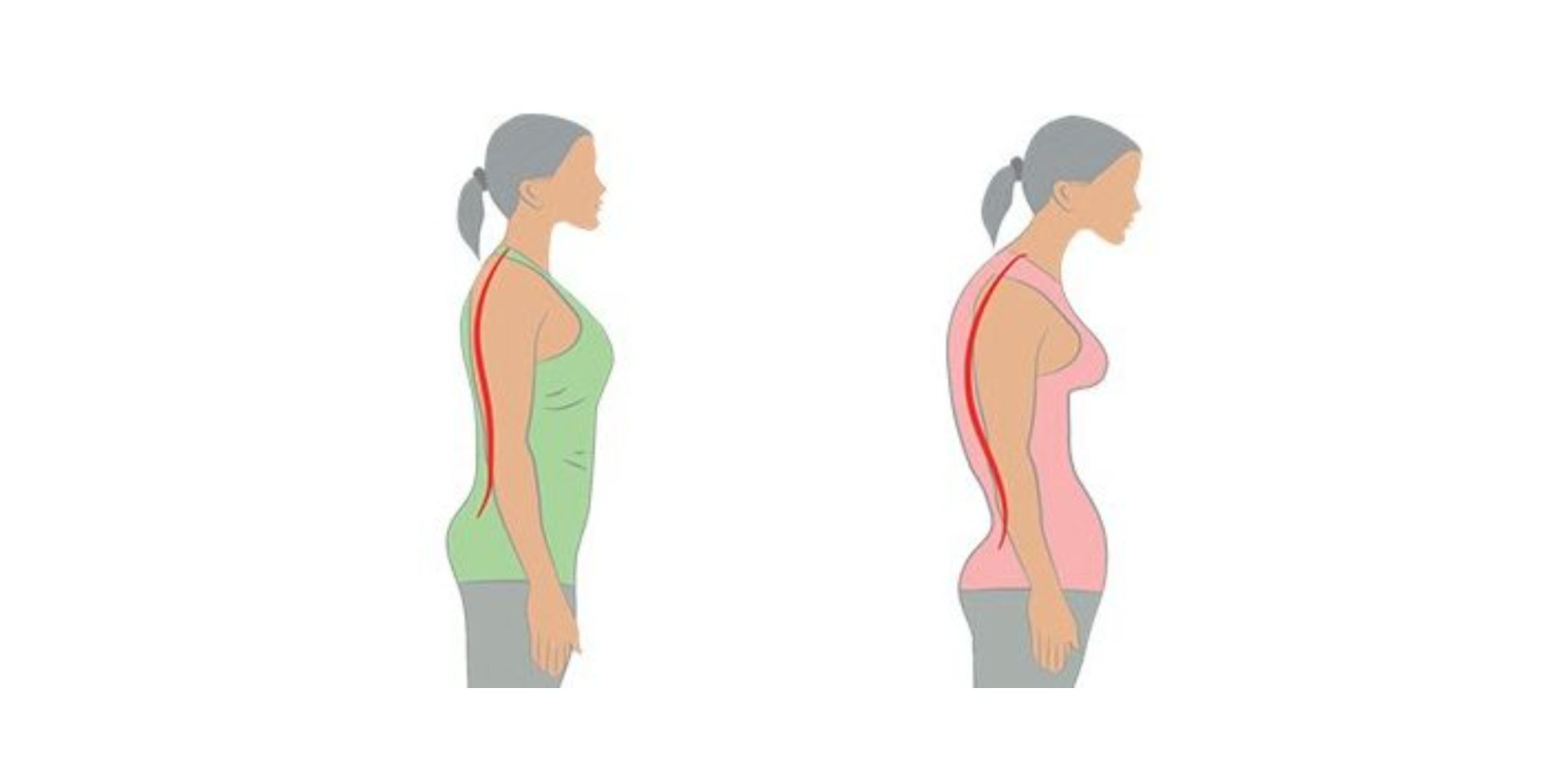How to Fix Forward Head Posture
By Dr. Paul Fierro, Sports & Family Chiropractor at Koru Chiropractic
Have you ever glanced at a mirror, seeing yourself from the side, and noticed how far forward your head is? Or how poor your posture is? Have you ever looked at your kid’s posture and thought “Wow, that’s really getting bad”? Well, I’m sure if you looked around, you’d see this posture and forward-head-positioning almost everywhere.
The increased prevalence of poor posture, specifically Forward Head Posture, can be attributed to the pervasive use of technology. Prolonged periods spent hunched over smartphones, tablets, and computer screens encourage this head-forward position, which over time, can lead to poor posture.
The body is a wonderfully efficient machine that does its best to place itself in the best position for what we continuously do. If you’re spending 8+ hours a day, 5+ days a week hunched over a computer or phone, the body will mold itself to that position. Sure, it’s efficient, but is it healthy? Let’s dive into it.
How Do I Know If I Have Forward Head Posture?
It’s important to first detect whether you or someone else has forward head posture. Sure, if you asked someone (or if someone asked you) to stand up straight and display good posture, they’d be able to do it. But what happens when no one’s looking, or you/they aren’t trying? Is there a hunch? Do they look curved forward?
You can use a pole, a beam, a seam, or anything straight to detect this in either yourself or someone else, but the best way to really measure and detect this is at the chiropractors office. Using a plum line, posture chart, and x-rays can give us quantitative measurements for how far forward the head is, and can also give a baseline for measurement on our efforts to fix this issue.
Symptoms can also arise because of forward head posture, such as:
- Posture-related headaches
- Chronic fatigue
- Muscular weakness (especially in the upper body)
- Shoulder pain and tension
- Neck discomfort and stiffness
Experiencing these symptoms on a regular basis certainly warrants a postural check-up, as they can all be manifestations from poor postural habits and poor workplace ergonomics.

How Bad Could This Be?
Poor posture can lead to a myriad of issues down the road. Lets talk about a few of them here:
-
Breathing Mechanics
- Forward head posture can compress the chest cavity, restricting lung expansion and reducing lung capacity. You can even try this yourself by taking a breath in good posture, followed by a breath with your head tucked forward into flexion (chin to chest). Which one is easier?
- For athletes, this is doubly important. Lung capacity and lung/diaphragm function can make a huge difference in the stamina, cognition, and performance level of athletes. Even for other people, would you rather breathe better? I’m sure you’re nodding your head at that.
-
Longevity & Pain
- Long term postural distortion can lead to chronic pain and inflammation, which are risk factors for various health issues. Degenerative changes are often seen with prolonged poor posture, this is because our curves act like shock absorbers in the body. Weight is evenly distributed through the bones in our vertebrae, which keep them healthy and functioning optimally. Shift that distribution forward, and we lose our shock absorbers, which cause these areas to degenerate quicker than normal, leading to chronic pain.
- Forward head posture also closes down the space where nerves from your neck and upper back exit the spine, which can bring about a number of symptoms that we commonly experience. Tingling or numbness in the arms, forearms, and fingers would be the most common manifestation of this issue, not to mention that the nerves from the upper back also travel to the heart and lungs. We want to allow the body to communicate freely, while forward head posture doesn’t allow for that to occur.
-
Mental Health & Hormonal Changes
- Chronic pain and discomfort from forward head posture can disrupt the balance of neurotransmitters in the brain, affecting mood, cognition, and overall mental health. Our brain chemistry is so important, it can change our perspective of the world in many ways. We definitely want to keep that as balanced and healthy as possible.
- Stress from pain, as well as shallow breathing, can increase our levels of cortisol, the stress hormone, which can have various negative effects on the body. These affects often manifest as impaired cognitive function and increased risk of mental health disorders.
Can This Be Fixed?
The best news about this is that it can be fixed. Now, reversing degeneration is unlikely, but we definitely want to take care of poor posture before that occurs, or at the very least, stop any degeneration from worsening.
The spine and our teeth are actually very similar. If you wanted to straighten your teeth, you’d opt for braces. In this common route, you’d get checked regularly, tweaked as needed, and ultimately wear a retainer afterwards to ensure that these bones don’t go back to their original position. Chiropractic acts in the same way. Understanding what your spine is doing, creating a plan forward to address poor posture, staying consistent with adjustments, and coming in every once-in-a-while afterwards can not only fix forward head posture/poor posture in general, but keep you in a proper position long-term.
Chiropractic adjustments are meant to realign the spine so that the body can function at 100% of its capacity. In freeing up these areas of misalignment, the body can stay on top of itself much easier, making proper posture more of a natural state rather than something to effort into all the time.
Supplemental Exercises
After getting adjusted, it’s important to also supplement these changes with exercises and stretches to combat the pattern of forward flexion we find ourselves in. Lifestyle changes are the best way to not only allow you to hold your adjustments for longer, but keep you in this proper position and reinforce proper alignment.
Here are a few moves/stretches/exercises to help:
-
Doorway Stretch
- How to Perform
- Using a doorway, place both arms in a 90 degree angle, with the inside of the arms on the door frame. Push your chest in to lengthen the front of the body. Hold here for 20-40 seconds, and repeat 1-2 times per session.
- Benefit
- Opening the chest is essential for combatting poor posture. As we flex forward, our chest closes and these muscles shorten, limiting extension and deep breathing.
- How to Perform
-
Shoulder External Rotation
- How to Perform
- Using a band, grab the band about shoulder width apart, palms facing up. Keeping your elbows by your side, bring your hands outward in a sweeping motion. Hold here and return back to neutral position. Repeat for 8-10 reps for 1-2 sets.
- Benefit
- As the body rounds forward, we lose tone in the external rotators of the body. To bring the shoulders back, external rotation exercises can also supplement opening the front of the body
- How to Perform
-
Back Rows
- How to Perform
- Using dumbbells, a cable machine, or bands, start with an erect posture, chest out and upright. Keeping your elbows in, bring your hands towards your ribcage as you keep proper posture. Return back to the resting position and repeat 8-10 reps for 1-3 sets.
- Benefit
- Posture in the beginning might feel like you have to ‘effort’ really hard to get (and stay) in proper position. The extensor muscles of the back need to be toned in order to hold you in these positions for a longer period of time. If they’re weak, you’ll lose this posture quickly, and fatigue before you’d like.
- How to Perform
-
Wall Head-Planks
- How to Perform
- Up against a flat wall, begin with your heels, buttocks, shoulders, and head against the wall. Take one step forward with your feet, remove your buttocks and shoulders off the wall so that the head is the only thing remaining. Ensure proper head position, and hold this position for 20-60 seconds.
- Benefit
- Strengthening the back of the neck is crucial for this process, as we tonify these muscles to keep our head over our shoulders easier and with less effort.
- How to Perform
- Thoracic Extensions (Countertop)
- How to Perform
- Find a countertop about belly height. Place your hands on the counter, back your feet up so your torso is at a 90 degree angle, and lower yourself down to poke your head through your arms. Hold this for 30-60 seconds and repeat for 1-3 times a day.
- Benefit
- Creating extension in the thoracic spine is necessary in this process, and is often something we neglect. We don’t want hyper-rounded upper backs, as it’ll keep us from being stacked evenly upright.
- How to Perform
It’s also important to understand where your posture is lacking. If you enjoy scrolling on your phone on the couch, or reading curled up, try performing these activities on your stomach. This will encourage extension, and even though it’ll be a bit achey at first, it’s in the proper direction for where we’re trying to go.
How Does Koru Chiropractic Support Patients with Poor Posture?
Forward head posture can have a wide range of negative effects on physical and mental health, as well as overall longevity. Addressing forward head posture through a chiropractic protocol, supplemental exercises, proper ergonomics, and overall bodily awareness can bring about the changes you’re seeking. It’s important to take care of this now, rather than waiting for things to worsen.
At Koru Chiropractic, our holistic, root-cause-oriented doctors aim to truly get to the bottom of the issue at hand. We understand that it’s not always as simple as just “standing up straighter”, and we’re here to support you through this journey. Complete the form below to schedule a consultation with one of our doctors.
If you or someone you know struggles with forward head posture and can’t seem to fix this issue, complete the form below to book your consultation
